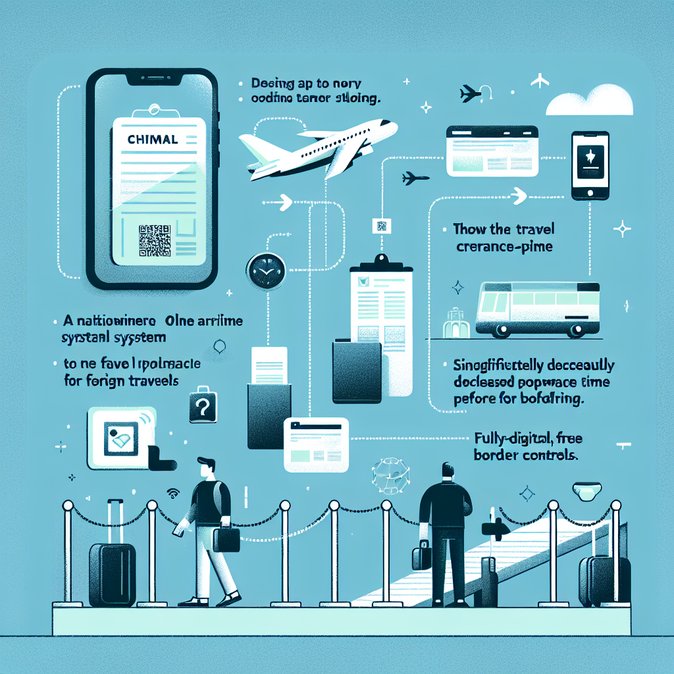
China’s long-trailed digital arrival-card system for foreigners went live across all Chinese ports of entry this morning, replacing the blue-and-white paper form that visitors have had to complete for three decades. From 00:00 on 20 November, passengers can submit their health and entry declaration before boarding via the National Immigration Administration (NIA) website, the “NIA 12367” app, or WeChat/Alipay mini-programs. Paper cards and on-site kiosks remain as a fallback, but airlines have begun displaying QR codes at check-in and during boarding to steer travellers to the mobile form.
The change is part of a wider package of ten facilitation measures announced earlier this month to support China’s post-pandemic reopening. By allowing advance submission and automated data matching with airline manifests, border officers in Shanghai, Guangzhou and Xiamen reported average clearance times falling by up to 30 seconds per passenger on the first morning of operation. Airport operators say that shaving half a minute off each inspection window could save 15–20 minutes on peak-hour queuing for wide-body arrivals.
![China Goes Paperless: Online Arrival Card for Foreign Travelers Officially Launches Nationwide]()
For business travellers, the practical benefit is two-fold: less time in arrivals halls and fewer errors that can trigger secondary inspection. Companies with frequent-flyer programmes are already circulating the QR codes to staff so that declarations can be completed in the car en-route to the airport. Multinational mobility managers also point to easier duty-of-care compliance, as employees can now take screenshots of the confirmation page and forward them to HR before departure.
Seven categories of travellers—including holders of Chinese permanent-resident ID cards, group-tour visas and 24-hour transit passengers—are exempt from filling in the form. Everyone else must complete it, but the system is available in nine languages and automatically saves passport details for repeat visitors. The NIA has opened a 24-hour hotline (12367) to troubleshoot problems; early feedback suggests most issues relate to photo uploads on older smartphones.
China’s move mirrors digital arrival systems already in use in Singapore and Australia and signals a broader shift toward contactless border management in Asia. It also lays the groundwork for future “single window” processing, where visa, customs and health declarations will be integrated into one mobile interface. Mobility advisers recommend that global companies update their pre-travel checklists immediately and conduct internal training before the year-end travel spike.
The change is part of a wider package of ten facilitation measures announced earlier this month to support China’s post-pandemic reopening. By allowing advance submission and automated data matching with airline manifests, border officers in Shanghai, Guangzhou and Xiamen reported average clearance times falling by up to 30 seconds per passenger on the first morning of operation. Airport operators say that shaving half a minute off each inspection window could save 15–20 minutes on peak-hour queuing for wide-body arrivals.

For business travellers, the practical benefit is two-fold: less time in arrivals halls and fewer errors that can trigger secondary inspection. Companies with frequent-flyer programmes are already circulating the QR codes to staff so that declarations can be completed in the car en-route to the airport. Multinational mobility managers also point to easier duty-of-care compliance, as employees can now take screenshots of the confirmation page and forward them to HR before departure.
Seven categories of travellers—including holders of Chinese permanent-resident ID cards, group-tour visas and 24-hour transit passengers—are exempt from filling in the form. Everyone else must complete it, but the system is available in nine languages and automatically saves passport details for repeat visitors. The NIA has opened a 24-hour hotline (12367) to troubleshoot problems; early feedback suggests most issues relate to photo uploads on older smartphones.
China’s move mirrors digital arrival systems already in use in Singapore and Australia and signals a broader shift toward contactless border management in Asia. It also lays the groundwork for future “single window” processing, where visa, customs and health declarations will be integrated into one mobile interface. Mobility advisers recommend that global companies update their pre-travel checklists immediately and conduct internal training before the year-end travel spike.









